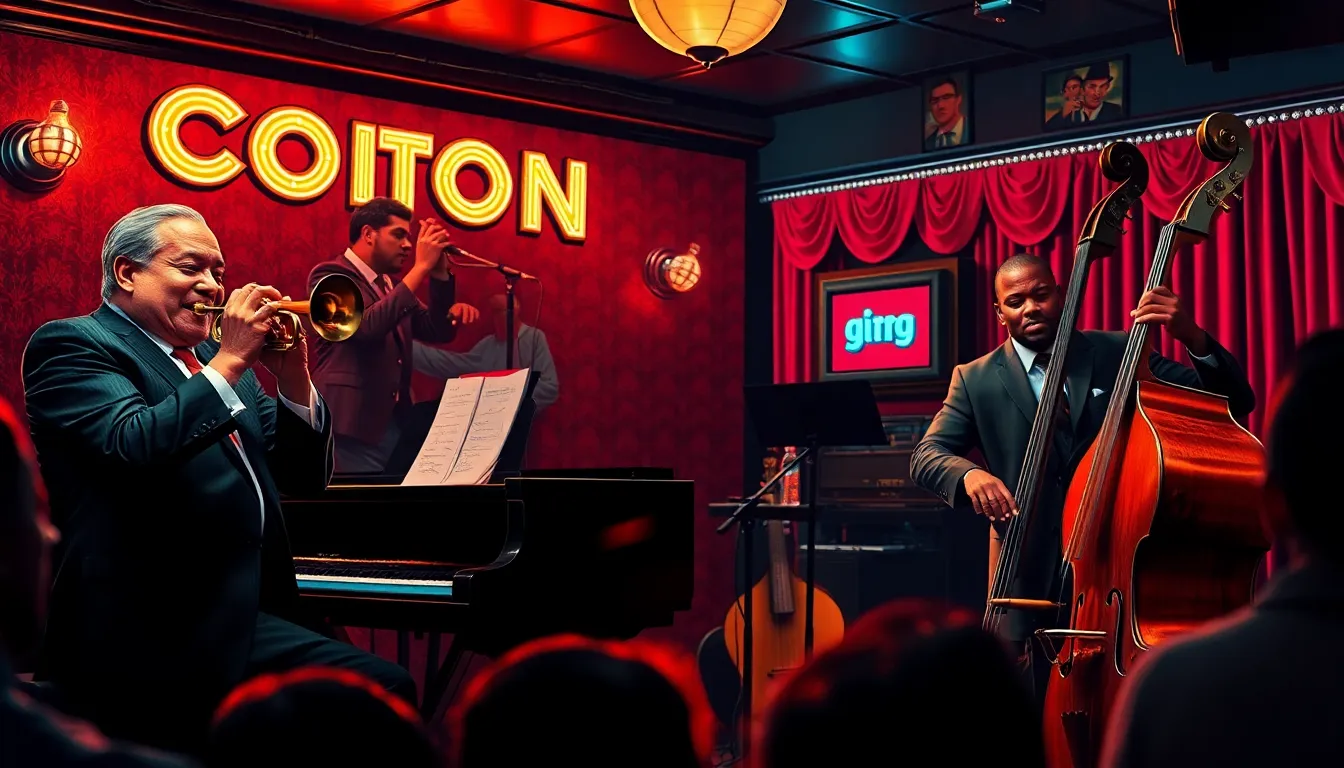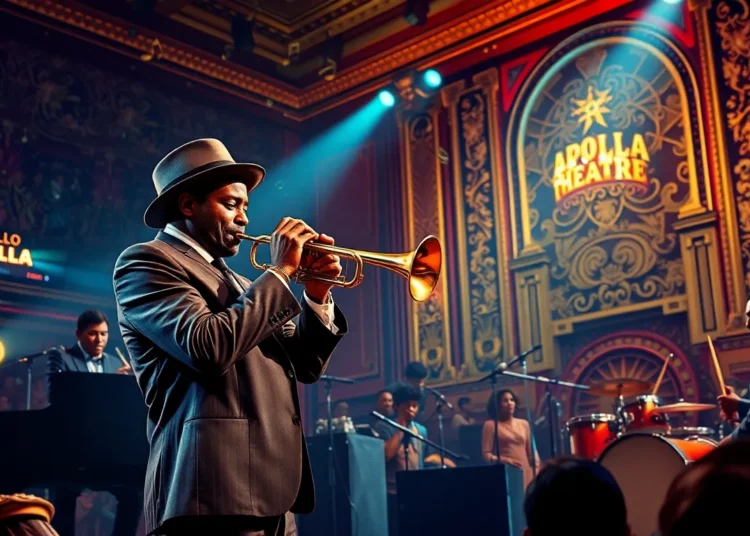The Harlem Renaissance wasn’t just a cultural explosion; it was a jazz-fueled rollercoaster that transformed music forever. Picture this: the streets of Harlem alive with the electrifying sounds of trumpets, saxophones, and pianos, as musicians pushed boundaries and redefined what jazz could be. These artists weren’t just playing notes; they were crafting a vibrant tapestry of rhythm and soul that captured the essence of an era.
Harlem Renaissance Jazz Musicians
The Harlem Renaissance marked a vibrant cultural awakening in the early 20th century, primarily during the 1920s. This movement celebrated African American cultural identity through art, literature, and music, leaving a lasting impact on American society. Artists and performers flocked to Harlem, creating a unique environment that influenced countless genres, particularly jazz.
Musicians pushed creative boundaries, blending traditional jazz elements with new styles and improvisations. Their performances often reflected the struggles and triumphs of the African American community. Iconic venues like the Cotton Club and the Apollo Theatre became hubs for showcasing talent, drawing crowds eager to experience the innovative sounds of jazz.
Key figures, including Duke Ellington and Louis Armstrong, emerged during this era. Armstrong’s innovative trumpet style and vocal techniques transformed jazz and inspired generations of musicians. Similarly, Ellington’s sophisticated compositions and orchestral arrangements pushed jazz into new territories, establishing it as a prominent art form.
The Harlem Renaissance also highlighted the importance of collaboration among artists. This synergy led to the fusion of different musical traditions, enriching jazz’s depth and complexity. The emergence of new rhythms and harmonies reflected the diverse influences permeating the Harlem landscape.
Moreover, the movement’s emphasis on racial pride and identity fostered a sense of community and empowerment. It laid the groundwork for future generations of musicians who would continue to evolve the genre. The contributions made during the Harlem Renaissance not only reshaped jazz but also set the stage for the civil rights movements that would follow.
Jazz Musicians from the Harlem Renaissance

Harlem Renaissance jazz musicians drew inspiration from various cultural and musical influences. These influences shaped their artistry, enriching the jazz genre.
Cultural Context
The Harlem Renaissance emerged as a pivotal cultural movement during the early 20th century. Artists, musicians, and writers expressed their identity through creative forms. This sense of community fostered collaboration among jazz musicians. They sought to reflect the African American experience, addressing themes of struggle and resilience. Public venues like the Cotton Club became gathering places, showcasing vibrant new sounds and styles. This environment encouraged experimentation and innovation, impacting jazz’s growth. Artists adapted popular European and African musical traditions, blending them with American sounds. These cultural legacies informed the jazz genres that developed during this era.
Jazz Harlem Renaissance Musicians
Musical innovation defined the jazz scene of the Harlem Renaissance. Musicians embraced improvisation, redefining traditional structures. Duke Ellington’s orchestral arrangements introduced sophistication to jazz performances. Louis Armstrong’s virtuosic trumpet skills revolutionized the role of the soloist in jazz. Rhythm changes and syncopation became hallmarks of the style, inspiring countless musicians. Artists began experimenting with new instruments and sounds, further enriching jazz’s complexity. The blend of blues influences with swing rhythms created a unique sound, captivating audiences. These advancements not only transformed jazz but also influenced other genres, solidifying the Harlem Renaissance’s musical legacy.
Famous Jazz Musicians During the Harlem Renaissance
The contributions of prominent jazz musicians during the Harlem Renaissance shaped the genre’s evolution. Their innovative styles and artistic expressions defined the era’s sound and culture.
Louis Armstrong
Louis Armstrong transformed jazz with his distinctive trumpet playing and vocal style. Known for his innovative techniques, he brought a sense of improvisation that captivated audiences. Armstrong’s performances featured unique phrasing and rhythm, showcasing his ability to blend various musical elements seamlessly. Popular tracks like “What a Wonderful World” and “West End Blues” exemplify his exceptional talent. His influence extended beyond jazz, impacting various genres and artists for decades.
Duke Ellington
Duke Ellington elevated jazz through sophisticated composition and orchestration. As a bandleader, he crafted pieces that combined rich harmonies with intricate melodies, pushing musical boundaries. His orchestral arrangements introduced jazz to a wider audience, captivating listeners in venues like the Cotton Club. Celebrated works such as “Mood Indigo” and “Take the ‘A’ Train” reflect his innovative approach. Ellington’s collaboration with various artists fostered a spirit of creativity that defined the Renaissance era.
Billie Holiday
Billie Holiday became an iconic figure in jazz known for her emotional depth and unique vocal style. She expressed complex feelings through her music, resonating deeply with her audience. Holiday’s ability to convey sorrow and joy made her performances unforgettable. Hits like “Strange Fruit” and “God Bless the Child” illustrated her powerful message and artistry. Her influence on future generations of musicians remains significant, highlighting her role in shaping the jazz landscape.
Jazz Musicians Of The Harlem Renaissance
Harlem Renaissance jazz musicians significantly influenced social dynamics and modern music trends.
Jazz Musicians Harlem Renaissance
Jazz served as a powerful vehicle for social change during the Harlem Renaissance. Musicians like Louis Armstrong and Billie Holiday expressed the African American experience through their songs, addressing themes of racial injustice and resilience. Performances in venues such as the Apollo Theatre fostered a sense of community and pride, uniting audiences around shared struggles and aspirations. The movement encouraged the exploration of identity, and artists used their platforms to call for equality. This cultural expression resonated beyond Harlem, inspiring broader social movements aimed at civil rights.
Legacy in Modern Jazz
The legacy of Harlem Renaissance jazz musicians endures in modern jazz. Innovative techniques introduced by figures like Duke Ellington and Louis Armstrong continue to inform contemporary styles. Their distinct approaches to improvisation and orchestration paved the way for future musicians, shaping the genre’s evolution. Diverse influences from this era have permeated various music forms, including hip hop and R&B. Artists today frequently adopt jazz’s improvisational elements, illustrating the ongoing impact of Harlem’s vibrant musical heritage. Jazz remains a testament to resilience and creativity, vital to American cultural identity.
Jazz Musicians During The Harlem Renaissance
The legacy of Harlem Renaissance jazz musicians is a powerful testament to the creativity and resilience of the African American community. Their innovative styles and emotional depth not only transformed jazz but also laid the groundwork for future musical genres. The vibrant atmosphere of Harlem during this era fostered collaboration and experimentation, resulting in a rich tapestry of sound that continues to inspire artists today.
As jazz evolved through the contributions of icons like Louis Armstrong and Duke Ellington, it became a voice for social change, reflecting the struggles and triumphs of a generation. This enduring impact on American culture underscores the importance of the Harlem Renaissance in shaping the musical landscape, ensuring that the spirit of this remarkable era lives on in modern music.










